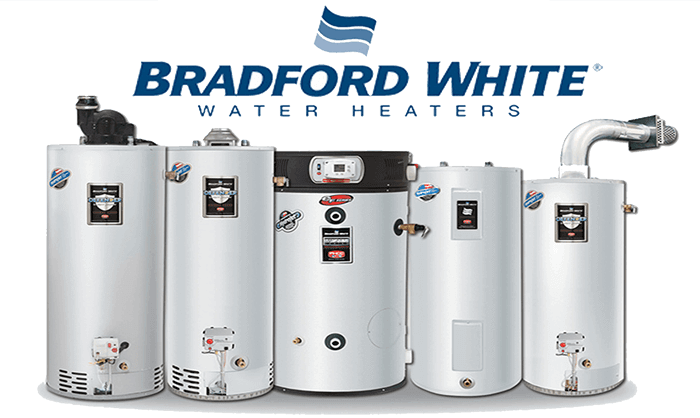Water Heater Buying Guide
The cost of heating water consumes almost 20 percent of your household budget, second only to what you spend on heating and cooling your home. Despite this expense, water heaters are typically ignored until they break, leaving you with no hot water and, possibly, a flooded basement.
If your water heater is nearing the end of its useful life and you’re thinking of replacing it before disaster strikes, you’ll be happy to know that you have better choices, thanks to recent federal regulations that require water heaters to be more energy-efficient. New storage tank water heaters are required to operate more efficiently, and tankless (on-demand) water heaters are even more efficient than that.
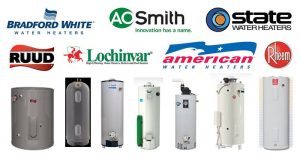 Typically, homeowners replace their old water heater with one of the same type that runs on the same fuel—natural gas or electricity. Switching from a tank water heater to a tankless unit can be expensive because it requires you to retrofit your plumbing and possibly your electrical system. But if you’re building a new home or adding to an existing one, installing a tankless water heater may make economic sense.
Typically, homeowners replace their old water heater with one of the same type that runs on the same fuel—natural gas or electricity. Switching from a tank water heater to a tankless unit can be expensive because it requires you to retrofit your plumbing and possibly your electrical system. But if you’re building a new home or adding to an existing one, installing a tankless water heater may make economic sense.
Consumer Reports recently tested several electric and gas whole-house tankless water heaters from brands such as Bosch, Navien, Noritz, Rheem, Rinnai, Tempra, and Trutankless. We compared the results with those of conventional tanked heaters from Rheem, one gas and one electric, as well as with a Rheem electric heat pump water heater, which is a variation on a tanked water heater.
Following a “heavy use” industry standard test, we compared the performance of gas and electric tankless water heaters with the performance of their conventional tank counterparts. The test used a high draw pattern equal to using 84 gallons of water per day. That’s the daily equivalent of taking several showers, running the dishwasher, washing one load of laundry, and turning the faucet on and off multiple times. The test used an inlet temperature of 58° F for gas models and 74° F for electrics (plus or minus 2° F) and a target outlet temperature of 120° F.
Because the tankless water heaters performed similarly to each other, we averaged the results of each batch, gas and electric, and compared that score with the performance of the conventional gas and electric storage tanks and the electric heat pump model. Using the purchase price, annual energy cost, and an estimated cost of installation, we calculated the payback time for both new and replacement installations. Payback time was longer for a tankless unit that replaced an existing storage tank but more reasonable with new construction.
Consider Capacity
Tank water heaters typically hold 40, 50, or 55 gallons or more. The size you buy depends on the number of people living in your home and your peak water usage. A family of four, for instance, might take several showers, run the dishwasher, and wash a load or two of laundry in an average day, totaling 100 gallons of hot water or more. But that doesn’t mean that household needs a 100-gallon storage tank.
For storage tank water heaters, it’s important to consider the first-hour rating, which is the number of gallons a water heater can deliver in an hour starting with a full tank. You’ll find the FHR on the EnergyGuide label. To calculate what FHR will work for your home, use the calculator on the Energy Saver website.
As the result of recently updated efficiency standards, water heaters under 55 gallons now have a 4 percent boost in efficiency, while water heaters 55 gallons or more have efficiency gains of 25 to 50 percent depending on the technology used—heat pump or condensing. (See water heater types below.)
And don’t assume a new water heater will fit where your old one was. Because of increased insulation and other efficiency improvements, some newer models may be wider and/or taller than your old water heater.
Tankless water heaters, of course, don’t hold much water, so the number to look for is the gallons-per-minute rating (GPM). That’s the number that tells you how much hot water the heater can deliver over a set period of time. The higher the GPM, the more hot water the unit can deliver. If you have a big family and multiple bathrooms, you’ll need a tankless water heater with a higher GPM. A typical shower, for example, uses up to 2.5 GPM.

Types of Water Heaters
Depending on how much hot water you use and how you’re heating the water (gas or electric), there are several choices. Some types are claimed to cut energy costs by up to half that of regular storage models. But their added up-front costs mean payback time might be longer.
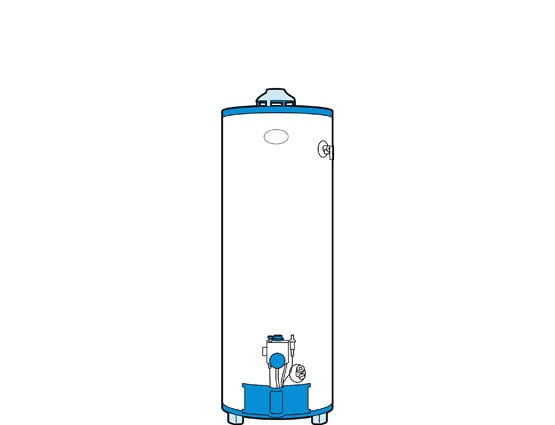
Storage Tank Water Heater
Storage tanks are the most common type of water heater. As the name suggests, these consist of an insulated tank in which water is heated and stored until needed, then emerges from a pipe on top of the water heater.
There is also a temperature- and pressure-relief valve, which opens if either exceeds a preset level.
Natural-gas water heaters typically use less energy and cost less to run (by about half) than electric water heaters, although you should note that gas models cost more at the time of purchase.
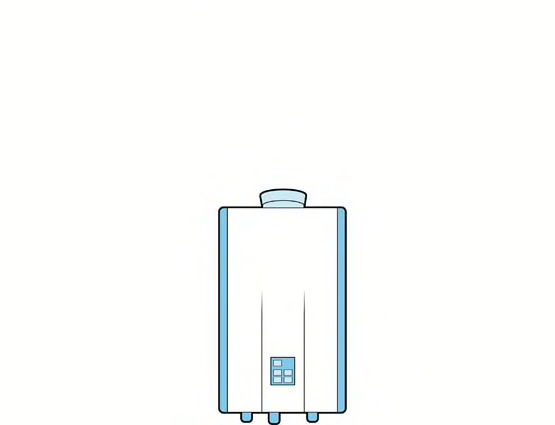
Tankless (On-Demand) Water Heater
Rather than storing water, tankless water heaters use heating coils to heat the water as you need it. They’re more energy-efficient than a storage tank but provide only a limited flow of hot water per minute—about 3.5 gallons, depending on inlet water temperatures.
They’re best for people who typically aren’t drawing water for more than one use at a time—such as running a shower and dishwasher simultaneously.
Tankless models are best for homes that use natural gas to heat the water; electric models might require an expensive upgrade of the home’s electrical capacity.

Heat Pump (Hybrid) Water Heater
These capture heat from the air and transfer it to the water. They use about 60 percent less energy than standard electric water heaters. And while they cost more than electric-only models, installation is similar and payback time is short. But they don’t work well in very cold spaces and need to be placed in an area that stays about 40° F to 90° F.
And because the heat pump is on top, a hybrid water heater needs as much as 7 feet of clearance from floor to ceiling. You’ll also need up to 1,000 cubic feet of uncooled space to capture enough heat from the air as well as a nearby drain to discharge the condensate.
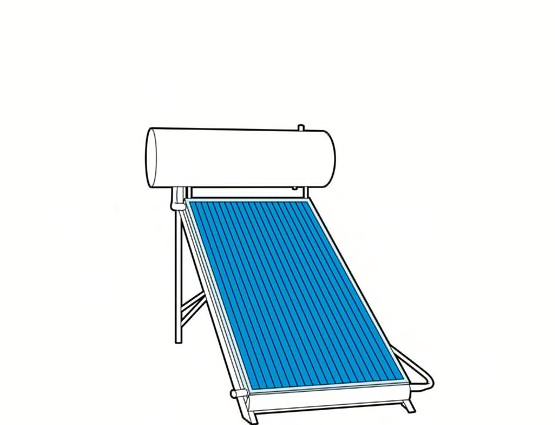
Solar Water Heater
A roof-mounted cell absorbs the sun’s heat and transfers it to an antifreeze-like fluid in a closed-loop system that runs to the water tank. The best deliver stellar savings in summer, making them attractive for warm, sunny regions. But savings suffer on cold and cloudy days. Most models employ a backup system that kicks in when needed.
Even with federal and local rebates, what you’ll spend to buy and install a solar system can mean you wait 10 to 30 years to recoup your costs.
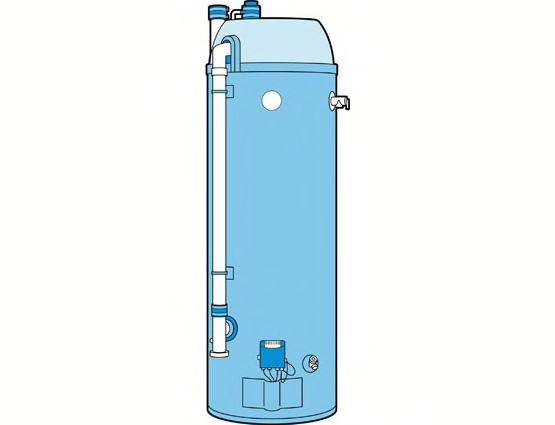
Condensing Water Heater
Condensing water heaters are an option if you heat with gas and need a unit with a capacity of more than 55 gallons.
These models have a tank like a conventional water heater, but they capture exhaust gases that would normally go out the flue, which wastes energy. These gases are blown through a coil in the base of the unit, where incoming cold water can absorb most of the heat.
Features to Consider
Warranty: Coverage for water heaters typically runs three to 12 years. While you’ll usually pay a bit more for longer-warranty models, we’ve found that they tend to have larger elements or burners that can speed up water heating and have thicker insulation for less heat loss. Choose a water heater with the longest warranty available.
Anti-scale devices: Some brands advertise features that are supposed to reduce buildup of mineral scale at the bottom of the tank by swirling the water. While scale can shorten the life of the heating element, you don’t need to invest in fancy features to get a water heater that lasts. Just look for one with a 12-year warranty, which typically includes a longer or thicker element.
Brass vs. plastic drain valves: These are situated near the base of the water heater for a garden hose that drains the heater. Look for brass drain valves, which are more durable than plastic.
Glass-lined tanks: Designed to reduce corrosion.
Digital displays: Help you monitor levels and customize operation. Some electric/heat pump hybrid water heaters let you set a vacation mode that uses just the heat pump for added efficiency when you’re away. Displays on solar water heaters often show tank and collector temperatures, along with pressure readings and other info.

